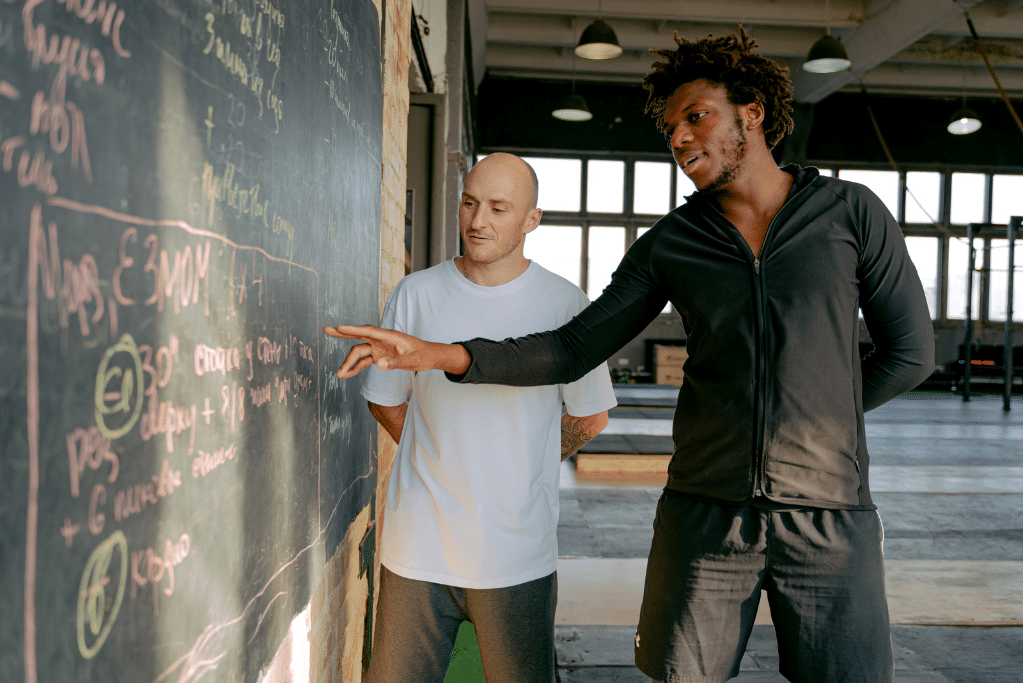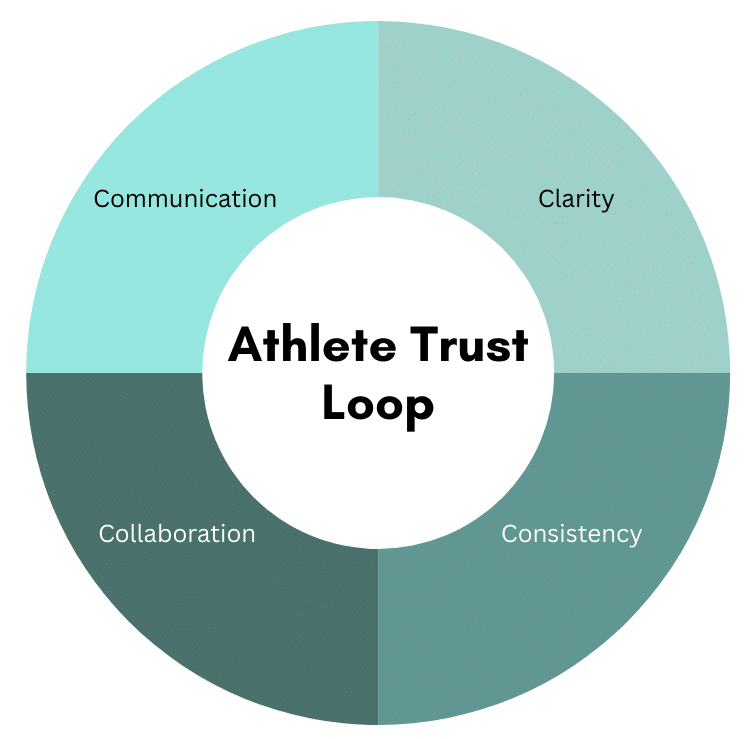The Athlete Trust Loop: How Great Clinicians Build Relationships That Drive Performance

Most healthcare professionals would say they have “good rapport” with the athletes they work with. And in many cases, that’s true—conversations flow, jokes are shared, treatments go to plan.
But rapport isn’t the same as trust.
In elite sport—where the pressure is high, decisions are time-sensitive, and the stakes include both careers and long-term health—trust isn’t just helpful. It’s critical.
Strong athlete relationships aren’t built on friendliness alone. They’re built through consistent behaviours that earn trust over time—and they can break just as quickly when those behaviours slip.
This post introduces a simple but powerful model used in performance environments: the Athlete Trust Loop. Grounded in research and real-world experience, it highlights four behaviours that build—and sustain—strong athlete–practitioner relationships.
What the Research Tells Us
Athlete–practitioner trust is more than a soft skill—it’s an evidence-backed driver of rehab outcomes, motivation, and psychological safety.
The Athlete Trust Loop draws from several research-backed frameworks, including:
- The 3+1 Cs model (Jowett, 2007)
- Therapeutic alliance literature in sports physiotherapy (Noh et al., 2021)
- Applied experience from elite rehab settings and Olympic-level performance teams
The takeaway? Relationships matter—and they can be actively shaped.
Introducing the Athlete Trust Loop
At the heart of every high-quality athlete relationship are four behaviours. Together, they form a loop—a continuous cycle that builds, reinforces, or, if neglected, breaks trust.
The four behaviours are:
- Connection
- Clarity
- Consistency
- Collaboration
Let’s take a closer look at each.

The 4 Behaviours That Build (or Break) Athlete Trust
Connection
Trust starts with genuine human connection. This means building rapport that goes beyond instructions and protocols.
Athletes want to feel seen and heard—not just treated. That doesn’t mean oversharing or becoming a best friend. It means showing interest in their experiences, emotions, and perspectives.
Athletes trust people, not protocols.
Clarity
Ambiguity erodes trust faster than almost anything else. Athletes don’t just need to know what they’re doing—they need to know why, how long, and what’s next.
But clarity isn’t just about what you communicate—it’s also about what you understand.
What are the athlete’s expectations for their recovery?
Do they believe they’ll fully recover, or are they aware of long-term management needs?
Do they expect hands-on treatment, a gym-based program, or both?
Missed expectations are the silent killer of trust. And often, they’re invisible—until something goes wrong.
Clarity is a two-way street: the athlete should understand the plan, and the therapist should understand what the athlete hopes to achieve.
Trust breaks when expectations are unclear—on either side.
Consistency
Small things matter: showing up when you say you will, sticking to the same message, following through on promises.
Inconsistency—whether in communication, availability, or clinical decisions—can create doubt.
Consistency is how credibility is built. Missed appointments, contradictory advice, or emotional unpredictability quickly erode trust, no matter how skilled you are.
Collaboration
The best relationships are two-way. Involve athletes in decisions. Ask for their input. Offer options where appropriate.
When athletes feel like co-creators of their recovery plan, motivation improves—and so does compliance.
Collaboration builds autonomy, ownership, and buy-in.
Remember: this loop isn’t a checklist. It’s a continuous cycle. Drop one behaviour, and trust may wobble. Nurture all four, and it strengthens.
When the Loop Breaks
When the loop breaks, it doesn’t usually happen all at once—it unravels slowly. Often, it looks like disengagement, not defiance.
You might see signs like:
- The athlete stops asking questions
- They start skipping sessions
- They follow the plan without enthusiasm—or not at all
- They hesitate to report symptoms or push themselves too early
Often, this isn’t a compliance issue. It’s a relationship issue. And for newer leaders, it can be a blind spot—especially if they’ve confused friendliness for trust.
A smile doesn’t always mean buy-in. Check the loop.
Self-Audit: Is the Athlete Trust Loop Working for You?
Here are six reflection questions to assess your current athlete relationships:
- Am I showing up consistently for this athlete?
- Do I clearly understand what they expect from the recovery process?
- Have I explained why we’re doing what we’re doing?
- Do I make space for the athlete to share concerns or ideas?
- Have I asked whether they understand—and agree—with the plan?
- Have I adapted my plan based on their feedback or preferences?
These questions help identify subtle trust gaps and support stronger, more collaborative relationships.
Trust as a Leadership Strategy
In human performance healthcare, trust is not a soft skill—it’s a strategic one.
It strengthens rehab engagement, improves decision-making, reduces conflict, and builds a high-functioning team culture.
The best therapists and leaders aren’t just highly skilled. They’re deeply trusted. And that trust isn’t assumed—it’s earned, with intention and consistency.
Want to explore how strong your leadership really is?
I’ve created a free Leadership Scorecard to help you identify your strengths — and uncover opportunities for growth — across 10 pillars of high-performing healthcare leadership.
Or browse more practical tools like this in my blog if you’d prefer to explore at your own pace.
References:
- Jowett, S. (2007). Interdependence analysis and the 3+1 Cs in the coach–athlete relationship. In Social Psychology in Sport, 15–28.
- Noh, D. et al. (2021). Therapeutic alliance in sports physiotherapy: A scoping review. Physical Therapy in Sport, 49, 15–22.
- Arvinen-Barrow, M. et al. (2019). Athletes’ perceptions of physiotherapist–athlete relationship in injury rehabilitation. International Journal of Sport and Exercise Psychology.
- UK Sport Applied Performance Team (internal reference), summarised in applied practice and CPD workshops across Olympic sport.
